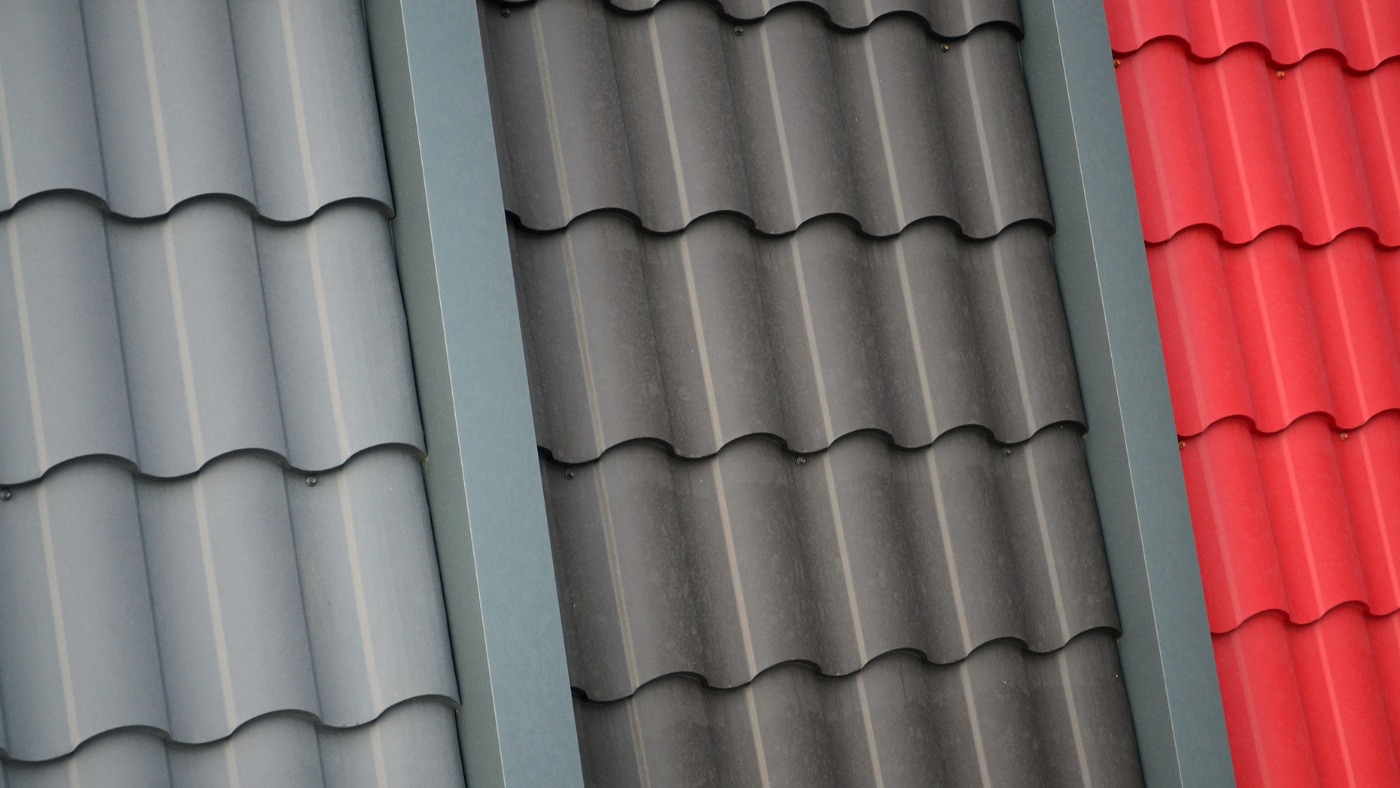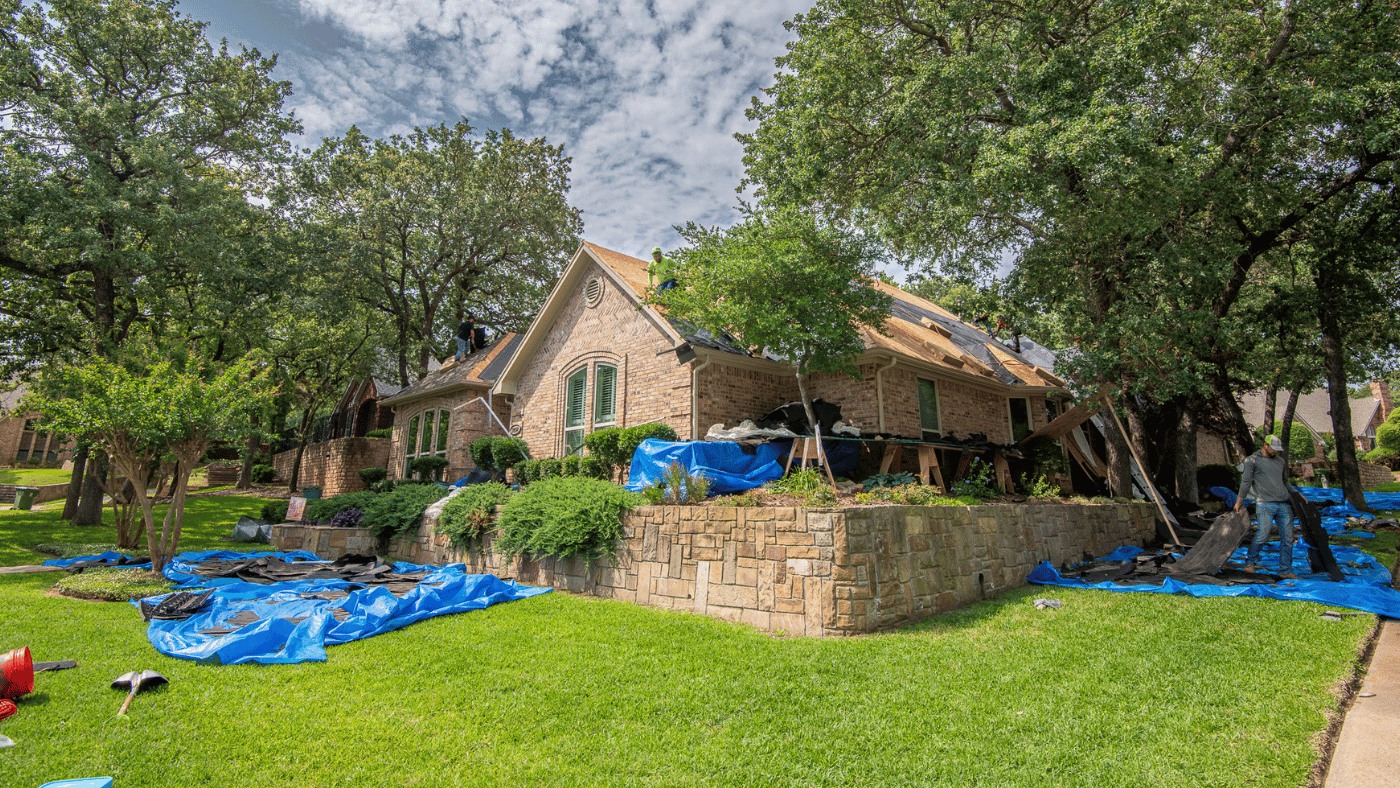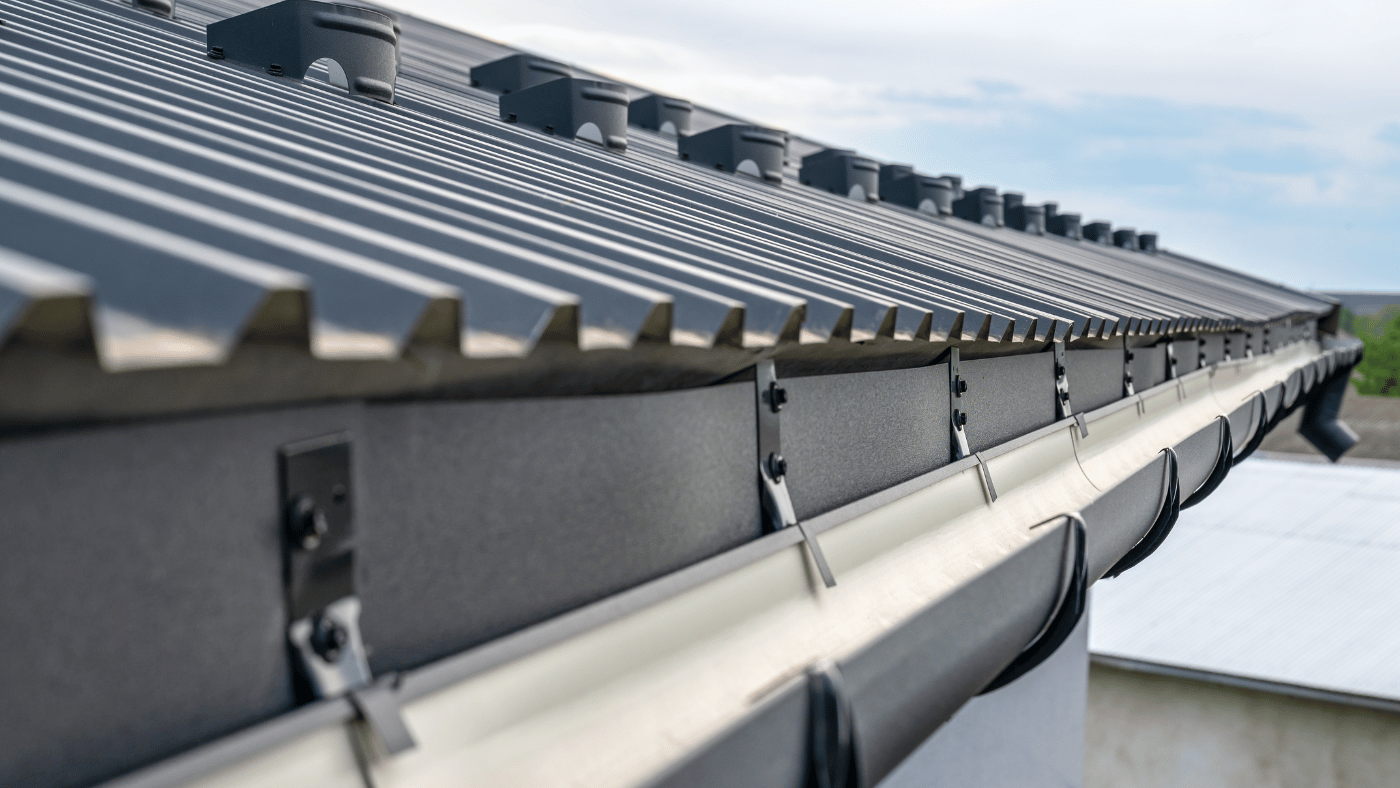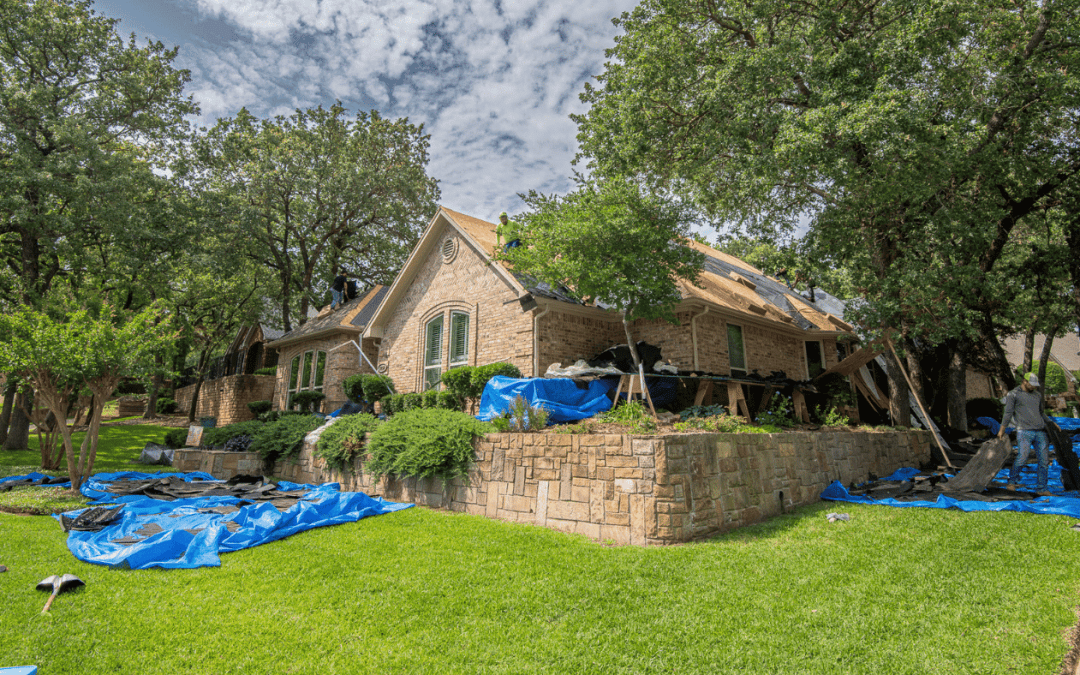A residential roof replacement involves removing and replacing the existing roof on a home and is almost always handled by roofing companies. Over time, a roof deteriorates due to weather conditions, age, or other factors, leading to leaks, water damage, or a decrease in energy efficiency. When a roof is no longer functioning correctly, a replacement is necessary to maintain the integrity of your home and protect its contents. Roof replacements can vary in scope and the cost of roof replacement depends on factors like the size and type of roof, the materials used, and the labor involved. If you’re here you probably want to understand the process and what’s involved in a residential roof replacement. And as a local, reputable roofing company if you’re about to replace the entire roof, we’re here to help you.
Benefits of Replacing Your Roof
Replacing your residential roof offers benefits that go beyond simply updating the appearance of your home. One key advantage is the prevention of water damage. Over time, roofs deteriorate and develop leaks, which can lead to costly repairs and potential structural damage. By investing in a roof replacement, you can safeguard your home from water intrusion and protect its integrity.
In addition, a new roof can enhance the energy efficiency of your home. An older roof may lack proper insulation, which can result in heat loss during the colder months and increased energy bills. A roof replacement allows you to install modern, energy-efficient materials that will significantly reduce heating and cooling expenses.
Replacing your roof can increase the overall value of your property. A well-maintained and updated roof is a key selling point for potential buyers. It not only provides peace of mind knowing that they won’t have to replace the roof themselves but also adds to the overall curb appeal of the house. In this world of rising insurance premiums, it also lowers the cost to insure your home.
Types of Residential Roofs
When it comes to residential roofs, homeowners in North Texas have a variety of options to choose from. Understanding the different types of roofs available can help you make an informed decision for your home. Asphalt shingles are a popular choice due to their affordability, ease of installation, and versatility in design. There are high-quality options as well as some made from cheaper materials. A metal roofs is durable, whch means it’s a great investment for homeowners who want a long-term solution. Concrete tiles provide a classic and elegant look, while also being highly durable. Additionally, there are options such as slate roofs and tile roofs that offer a unique and upscale appearance. Each type of roof has its own benefits and considerations, so it’s essential to consult with a professional roofing contractor to determine the best option for your specific needs.
Asphalt Shingles
If you are considering a roof replacement for your North Texas home, you may come across the term “asphalt shingles”. Asphalt shingles are the most common roofing material used for North Texas residential roofs. They offer a reliable and cost-effective solution for homeowners.
There are two main types of asphalt shingles: three-tab and architectural shingles. Three-tab shingles are the most basic and affordable option. They consist of a single layer and are lighter in weight. On the other hand, architectural shingles are thicker and more durable. They have multiple layers and are designed to mimic the appearance of other roofing materials, such as wood or slate. Architectural shingles are known for their enhanced performance and longevity, but they do come at a higher price point. At Texas Direct Roofing & Construction we don’t sell three-tab and will upgrade any of our customers to architectural by default.

One of the main advantages of asphalt shingles is their affordability. They are relatively cheap compared to other roofing materials. Asphalt shingles also offer a wide range of color options to suit different architectural styles and personal preferences. In addition, they are relatively easy to install, which can help reduce labor costs.
However, it’s important to note that asphalt shingles may not be as long-lasting as other roofing materials, such as metal or slate. They are prone to wear and tear over time, especially in extreme weather conditions. Despite their drawbacks, asphalt shingles remain a common and reliable choice for residential roofs due to their affordability and aesthetic appeal.
Metal Roofs
If you’re considering a residential roof replacement in North Texas, one option you should explore is metal roofing. Metal roofs have gained popularity in recent years due to their durability, fire resistance, and energy efficiency. There are several types of metal roofs to choose from, including steel, aluminum, copper, and alloy strips.
One of the biggest advantages of metal roofs is their longevity. Unlike asphalt shingles that may need to be replaced every 15-20 years, metal roofs can last 50 years or more with proper maintenance. They are also highly resistant to fire, making them a safer option for your home.

Metal roofs are also known for their energy efficiency. They can reflect sunlight, reducing the amount of heat that is absorbed into your home and potentially lowering your cooling costs. Some metal roofs are even Energy Star certified, meaning they meet certain standards for energy efficiency.
When it comes to installing a metal roof, it’s important to hire a contractor who is familiar with this type of roofing material. Metal roofs require specialized installation techniques and equipment, so it’s essential to work with a professional who has experience in this area. They can ensure that your new roof is properly installed and provide guidance on selecting the right type of metal roof for your home.
In conclusion, if you’re looking for a durable, fire-resistant, and energy-efficient roofing option for your North Texas home, metal roofing is worth considering. Just be sure to hire a contractor who is knowledgeable and experienced in metal roof installation to ensure a successful and long-lasting roof replacement.
Other Types of Materials
When it comes to residential roof replacements, there are several types of roofing materials to choose from. Other than metal roofs and asphalt shingles, here are some other popular options:
1. Tile Roofs: Tile roofs are known for their durability and long lifespan, often lasting over 50 years. They come in various materials such as clay, concrete, and slate. Tile roofs are excellent at withstanding harsh weather conditions, including high winds and heavy rains. However, they are relatively expensive compared to other materials and may require additional structural support due to their weight.
2. Wood Shakes and Shingles: Wood roofs offer a natural and rustic appearance, enhancing the curb appeal of your home. They are also eco-friendly and energy-efficient. Wood shakes and shingles are typically made from cedar, redwood, or pine and can last between 30 to 50 years with proper maintenance. However, they require regular upkeep and are more susceptible to fire, rot, and insects compared to other materials.
3. Synthetic Roofing Materials: Synthetic roofing materials, such as rubber, plastic, and polymer, mimic the look of other materials like wood shakes or slate tiles but offer better durability and lower maintenance requirements. They are also lightweight and can withstand extreme weather conditions. While synthetic roofs can be more expensive upfront, their longevity and resistance to damage often make them a cost-effective option in the long run.
Considering the characteristics, durability, cost, and appearance of these other types of roofing materials can help you make an informed decision when it comes to your residential roof replacement. Consulting with a professional roofing contractor can provide further guidance in selecting the most suitable option for your home.
Prep for the Project
When it comes to replacing your residential roof, proper preparation is key to ensuring a smooth and successful project. Before diving into the world of roofing contractors and materials, it’s important to take the time to plan and prepare. Start by assessing the condition of your current roof and identifying any signs of damage or leaks. Consider your budget, insurance coverage, and desired roofing material. Research local building codes and permits required for your area. It’s also crucial to choose a reliable and experienced roofing professional who can guide you through the process and provide expert advice. By taking these steps and preparing thoroughly, you can ensure that your roof replacement project will be a sound investment for your home and peace of mind for years to come.
Understanding the Square Footage Needed
When embarking on a residential roof replacement project, it is crucial to accurately determine the square footage of your roof. This measurement plays a vital role in ensuring the right amount of materials are ordered, reducing waste and expense.
To determine the square footage of your roof, start by measuring the length and width of each rectangular section. Multiply the length by the width to calculate the area of each section, then add them together to get the total square footage.
You’re going to hear roofers use the term “square,” which just means 100 square feet. This measurement is used to simplify calculations when it comes to ordering materials. By dividing the total square footage of your roof by 100, you can determine the number of squares required.
Accurately measuring the size of your roof allows you to order the appropriate quantity of materials, such as asphalt shingles or metal panels, ensuring a smooth and efficient installation process. Moreover, it helps prevent delays and costly mistakes.
Remember, when it comes to residential roof replacements, understanding the square footage needed is essential to ensure a successful outcome and save both time and money.
Estimating Average Costs
Estimating the average costs for different types of roofs is an essential step in planning your residential roof replacement project. The total cost will vary depending on factors such as the size of your roof, the materials chosen, the labor involved, and the location of your home in North Texas.
For basic asphalt shingles, the average cost usually ranges from $3 to $5 per square foot. However, this cost can increase if there are unique roof features or a higher pitch, which can make the installation more challenging and time-consuming.
If you’re considering a more durable and long-lasting option like copper roofing, the average cost can be significantly higher, ranging from $15 to $30 per square foot. This higher cost is due to the premium quality and aesthetics that copper offers.
Other popular roofing materials, such as metal roofs or concrete tiles, have varying average costs depending on their quality and installation requirements. Metal roofs can range from $5 to $12 per square foot, while concrete tiles can range from $8 to $15 per square foot.
Keep in mind that labor costs and the location of your home within North Texas can also influence the overall cost of your roof replacement project. It’s best to consult with roofing professionals in your area to receive accurate estimates tailored to your specific needs.
Identifying Local Regulations and Building Codes
When undertaking a residential roof replacement project in North Texas, it is crucial to identify and adhere to local regulations and building codes. These requirements ensure that your project meets legal standards and ensures the safety and integrity of your home.
It’s important to note that regulations and building codes can vary by location, so it is essential to research and understand the specific requirements for your area. This information is typically available through the local municipality’s building department or online resources.
One common regulation is the need for a building permit. Before starting any roofing work, it is necessary to obtain a permit from the local authorities. This permit ensures that the project complies with safety standards and is subject to inspections to verify compliance.
Additionally, local regulations may specify maximum building height and requirements for fire safety and structural integrity. These regulations are in place to protect the community and ensure that buildings are safe and resilient in the face of natural disasters or emergencies.
By identifying and adhering to local regulations and building codes, you can ensure that your residential roof replacement project meets legal requirements and safeguards the structural integrity of your home. Remember to consult with roofing professionals well-versed in local regulations to guide you through the process smoothly.
Choosing a Professional Roofer
Choosing a professional roofer or contractor for your residential roof replacement project is crucial to ensure a successful outcome. Here are some important steps to take when conducting your research.
Start by looking at roofs in your area that you admire and try to find out who did the work. This can be as simple as asking your neighbors or taking note of signage on nearby projects.
Next, turn to online resources such as the Better Business Bureau, Angie’s List, Homefinder, Yelp, and Google for reviews and ratings. These platforms provide valuable insights into the reputation and reliability of different roofing professionals or contractors.

Before making a decision, verify that the contractor has the necessary insurance and accreditations. This includes liability insurance and workers’ compensation certificates. It is vital to protect yourself from any potential liability or injuries that may occur during the project.
When hiring, obtain multiple estimates from different professionals or contractors. This will give you a better understanding of the average cost and scope of the project.
Lastly, ensure that all agreements and expectations are clearly stated in a written proposal. This should include a description of the work to be done, start and completion dates, and payment terms.
By following these steps and doing your due diligence, you can hire a professional roofer or contractor who will deliver quality work and ensure a successful residential roof replacement project.
Let’s Talk Process
Replacing your residential roof can be a daunting task, but with the right knowledge, preparation, and professional assistance, the process can be smooth and stress-free. In this article, we will guide you through the important steps of replacing your roof, from finding the right contractor to understanding the cost and timeline of the project. By following these steps, you can ensure that your roof replacement is done efficiently and effectively, protecting your home for years to come.
Preparation: Removing Old Material and Inspecting Decking
Preparing for a roof replacement involves several steps to ensure a smooth and successful process. One important aspect is the removal of old shingles, which is typically done by roofing contractors. They will carefully strip off the old shingles, disposing of them properly.
Once the old shingles are removed, the underlayment and decking underneath need to be inspected. The underlayment is a water-resistant barrier that helps protect the home from potential leaks. The roofing professionals will inspect it for any signs of damage or wear and tear, replacing it if necessary.

The decking, also known as the roof sheathing, is the base layer that provides support for the roof. It is crucial to ensure its structural integrity, as a damaged or weak deck can lead to future problems. The contractors will thoroughly inspect the decking, repairing or replacing any areas that show signs of damage.
In addition to preparing the exterior of the home, it is important to prepare the inside as well. This involves moving any valuable items or furniture away from areas where the work is going to take place. It is also a good idea to cover these items with protection, as the work may produce dust or debris. Additionally, cutting the grass and moving outdoor objects away from the house can provide better access for the roof replacement team.
Overall, properly preparing for a roof replacement, including removing old shingles and inspecting underlayment and decking, is essential for a successful and long-lasting roofing project.
Installing New Materials
If you’re considering a residential roof replacement in North Texas, you should know about the process of installing new layers of roofing material. Whether you’re going with asphalt shingles, metal sheets, or any other type of material, here’s what you can expect.
First, the old shingles and underlayment are removed. This is done carefully to ensure that no damage is done to the roof decking. The underlayment is then inspected for any signs of wear or damage. If necessary, it will be replaced to ensure proper protection against leaks.
Next, the new roofing material is installed. This involves adding drip edges along the edges of the roof to prevent water from seeping in. Vents are also installed to allow for proper ventilation in the attic. Flashing is added around roof features, such as chimneys or skylights, to prevent water penetration.
During the installation process, the curb appeal of your roof can also be enhanced. This may include adding architectural details or choosing a color that complements the overall aesthetic of your home.
By following these steps, you can have confidence in the installation of your new roofing material. Whether you choose asphalt shingles, metal sheets, or any other type of material, a professional roofing contractor will ensure that your residential roof replacement is done correctly and efficiently.
Finishing Touches
When it comes to residential roof replacements in North Texas, adding the finishing touches is crucial for a successful project. These finishing touches include drip edges, vents, flashing, and curb appeal.
Drip edges play a crucial role in protecting the roof from water damage. They are installed along the edges of the roof, ensuring that water does not seep into the underlying structure. This helps prevent leaks and potential water damage to the roof decking and interior of the house.
Proper ventilation is also essential for a healthy roof and home. Vents are installed to allow air to circulate in the attic, preventing moisture buildup and keeping the roof in good condition. Adequate ventilation helps to extend the lifespan of the roofing materials and minimizes the risk of mold growth.
Flashing is another important component of a residential roof replacement. It is installed around roof features such as chimneys or skylights to prevent water from penetrating these vulnerable areas. Flashing acts as a barrier, directing water away from potential entry points and protecting the underlying structures.

In addition to functionality, curb appeal should not be overlooked. Enhancing the aesthetics of the roof can greatly improve the overall appearance and value of the home. This can be achieved through architectural details and selecting a color that complements the house’s exterior.
There are various options available when it comes to drip edges, vents, and flashing. It’s a great idea to give us a call, so we can help you pick the options that are best for you. We’ll guide you through the installation process and ensure that these finishing touches are properly installed, protecting your home for years to come.

